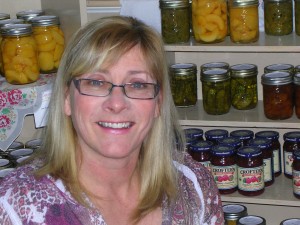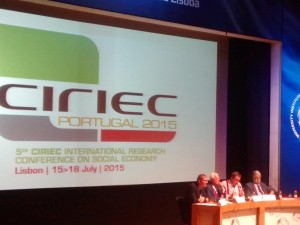M.A. Lemay, Postdoctoral Fellow, University of Guelph
As a globally recognized sustainable agriculture practice, integrated pest management (IPM) represents an excellent case for better understanding the role of the environmental sustainability in a social economy of food.
_________________________
The IPM and Social Economy of Food case study is part of the Social and Informal Economies of Food Series, a project funded by the Social Sciences and Humanities Research Council (SSHRC): The Social Economy of Food: Informal, under-recognized contributions to community prosperity and resilience. It combines a profile of IPM in Ontario with analysis of the peer-reviewed literature to show how IPM could serve a social economy of food by building adaptive and resilient agro-ecosystems and increasing the social capital of the stakeholders who collaborate in successful IPM programs.
_________________________
Yellow sticky traps and weather station are used to monitor pest populations and weather patterns in an onion field in the Holland Marsh, Ontario. Photo: T. Cranmer, OMAFRA
Worldwide, up to 40% of crops are damaged by pests. Climate change is expected to increase crop losses from pests. Protecting crops from a vast range of insect, rodent, bird, weed and disease pests is vital to food security, human health and overall social wellbeing. Pesticides have played a major role in crop protection for the past 60 years. With the growing awareness of the detrimental environmental, health and economic consequences of indiscriminate pesticide use, sustainable methods of crop protection have become a priority. IPM was introduced in the 1960s as a more sustainable approach to crop protection. It is now the preferred method of crop protection and is seen as fundamental in the transition to sustainable agriculture.
IPM is an ecology-based approach to sustainable crop protection that combines biological, cultural, physical and chemical tools in ways that reduce the environmental, health and economic risks posed by pests and pest management practices. IPM integrates and applies knowledge of pest-crop-natural enemy, biology and interactions, ecosystem dynamics, local weather patterns and crop production practices. It is a data-intensive practice that involves regular monitoring of pest populations, crop damage and weather conditions to determine if and when crop protection interventions are necessary.
Physical management strategies, such as yellow sticky tape and traps are used to mass trap pests in the greenhouse. Photo: S. Jandricic, OMAFRA
Beyond the environmental and economic benefits of reduced pesticide use, IPM enhances the ecological resilience of agroecosystems. Applying IPM at the landscape or agroecosystem scale provides private financial benefits directly to farmers and public goods benefits, such as the provision of essential ecosystem services, protecting public health and rural economic development. This multi-functional nature of IPM is crucial to its role in contributing to the overall adaptive capacity and resilience of the agri-food system.
Cultural management practices, such as planting ‘cover crops’ between rows in the vineyard provides habitat for beneficial insects, enhances biodiversity and increases the capacity of the agroecosystem to provide essential ecosystem services. Photo: J. Lasnier, Ag-Cord Inc.
Successful IPM requires the cooperation of multiple stakeholders taking part in various activities (Table 1). Crop monitoring, knowledge sharing, networking, training and research bring stakeholders together in collaborative relationships that build trust and reciprocity. The participatory nature of IPM, the reciprocal learning and the skills development are powerful means by which the social capital of all stakeholders is enhanced.
Because it is accessible and available to all crop production approaches and can be practiced regardless of socio-economic status, IPM contributes to increasing prosperity for marginalized groups, specifically addressing inequalities by leveling the playing field between conventional production and alternative food production approaches that are advocated within a social economy paradigm.
Parasitic wasps search for aphids on mint in a greenhouse. Biological control is the use of natural enemies to manage pests. Ontario’s greenhouse sector is second only to Europe in its adoption of biological control. Photo: J. Lemay, Eco-habitat Agri-Services
IPM is a priority in Ontario and supported by diverse stakeholders (Table 1), but the lack of a provincial IPM policy or strategy leaves Ontario at a disadvantage compared to other jurisdictions. The European Union’s (EU) recent pesticides packageincludes two Directives and two regulations, which makes IPM mandatory for state members. It has positioned IPM as The EU has also committed significant funding to the coordination of IPM research and knowledge mobilization among member states, which has triggered new initiatives that support the development and implementation of advanced, agroecosystem based IPM (Barzman et al 2015).
Envisioning IPM within a social economy of food has implications for several of OMAFRA’s current agri-food and rural policy priorities, including increased adoption of environmental beneficial management practices, innovation in IPM, the transition to sustainable production and the expansion of local food to improve the health of Ontarians (OMAFRA 2018). Connecting policies for IPM and a social economy of food represents a novel policy approach for supporting the transition to sustainable agriculture through food production systems that are socially acceptable, ecologically responsible and economically viable.









